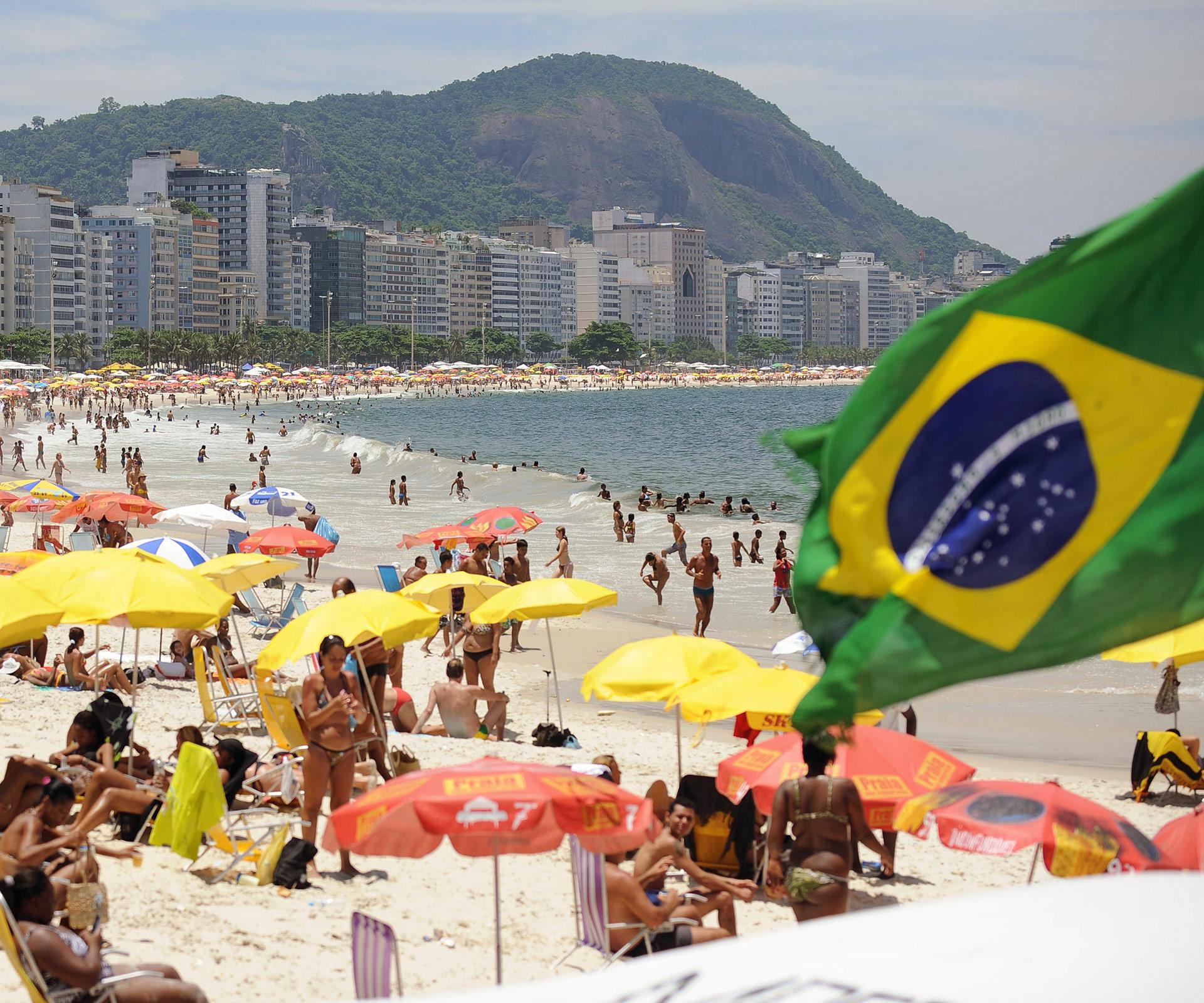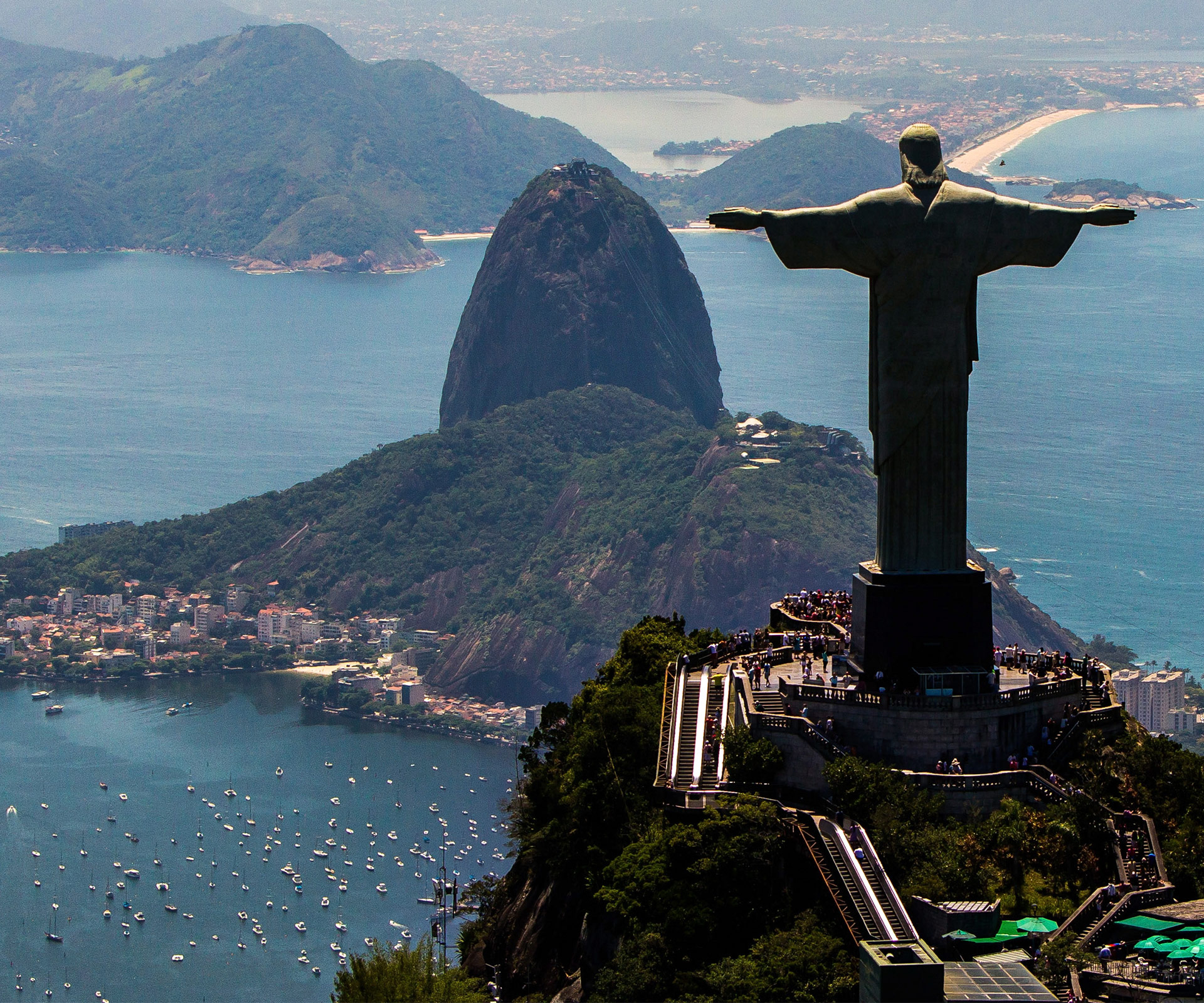With its 4km gently curving arc of sand, lined with white highrises and a shopping and partying strip that goes day and night, Rio’s Copacabana is like Bondi Beach on steroids!
Locals – known as Cariocans – play volleyball, soccer and a host of other games on the sand. You can even drink on the beach, and bars and kiosks sell a range of local beers and – of course – Brazil’s most famous cocktail, the Caipirinha.
There are lots of other beaches too. Stylish Ipanema is more upmarket, with trendy boutiques to explore, while Barra da Tijuca – known just as Barra – boasts Rio’s longest stretch of sand at 18km.
It’s in Barra that much of the action for the 2016 Olympic and Paralympic Games will take place, as the area plays host to almost half the competitions as well as the athletes’ village.
It all kicked off last Friday, with the Opening Ceremony lighting up the newly revamped Maracana Stadium in the city centre.

The Maracana Stadium lights up during the Opening Ceremony.
A bird’s-eye view
The giant statue of Christ the Redeemer is an iconic Rio sight and a must-do excursion.
I take a 20-minute train ride through jungle-covered hills to the top of Corcovado mountain, where heavy fog means the 38m statue is almost totally obscured. But the mountain mists can pass within seconds so, along with hundreds of others hopeful of a glimpse, I hold my camera at the ready and cross my fingers.
Then, just as suddenly as it descended, the fog lifts and we gaze in awe at the spectacular statue and sweeping views.
While it’s clear I also take a cable car up to Sugarloaf Mountain – Rio’s other prime vantage point for panoramic city views.

The giant statue of Christ the Redeemer is a must-do excursion.
Gritty pretty
One thing that surprises me about Rio is the beautiful street art all over the city. Colourful paintings brighten up the grey walls of many of the crumbling neoclassical buildings.
The notorious favelas – Rio’s makeshift shantytowns – are brightly coloured too. A favela tour gives a fascinating insight into the lives of the locals.
“The law in Brazil is that if you build something and stay for five years, you then own it,” my guide explains. “The favelas were built by people from the north-east of Brazil who moved to the city to find work.”

Rio’s favelas provide another aspect to the bustling city.
Fire up the barbie
Visiting a churrascaria – Brazilian barbecue – is a must when in Rio.
At Fogo de Chao in Barra, a procession of waiters dressed as gauchos pass by my table, bearing long skewers of different meats.
I’m told that placing my order card face up (green) means yes, I want more, while face down (red) means I’m done. I sample sausage, prime rib, fillet, lamb, pork and more, with a variety of side sauces. It’s a lot of fun and everything tastes delicious.

No trip to Rio is complete without chowing down at a a churrascaria!
Rio by night
The Lapa nightlife district is a bustling area full of cafes and bars spilling onto the street.
I order a drink and tapas and mingle with the locals, before taking the short walk to Rio Scenarium, a famous restaurant with three floors of drinking, dining, dancing and live music.
As I samba the night away, I realise Brazilians aren’t so different to us Aussies. After all, they like to eat, drink and barbecue – what’s not to love?

Soak up the sun on Copacabana beach.
Need to know
LATAM flies to Santiago seven days a week, with onward connections to Rio, Belo Horizonte, Cuiaba (the Pantanal) and other cities in Brazil from $1905. 1800 126 038 or latam.com
Eclipse Travel has a 12-day Explorers Route itinerary that takes in Buenos Aires, Rio, Iguazu Falls, the Pantanal and Ouro Preto from AUD$5,736 per person, including accommodation, internal flights and guides. 1300 575 752 or eclipsetravel.com.au


